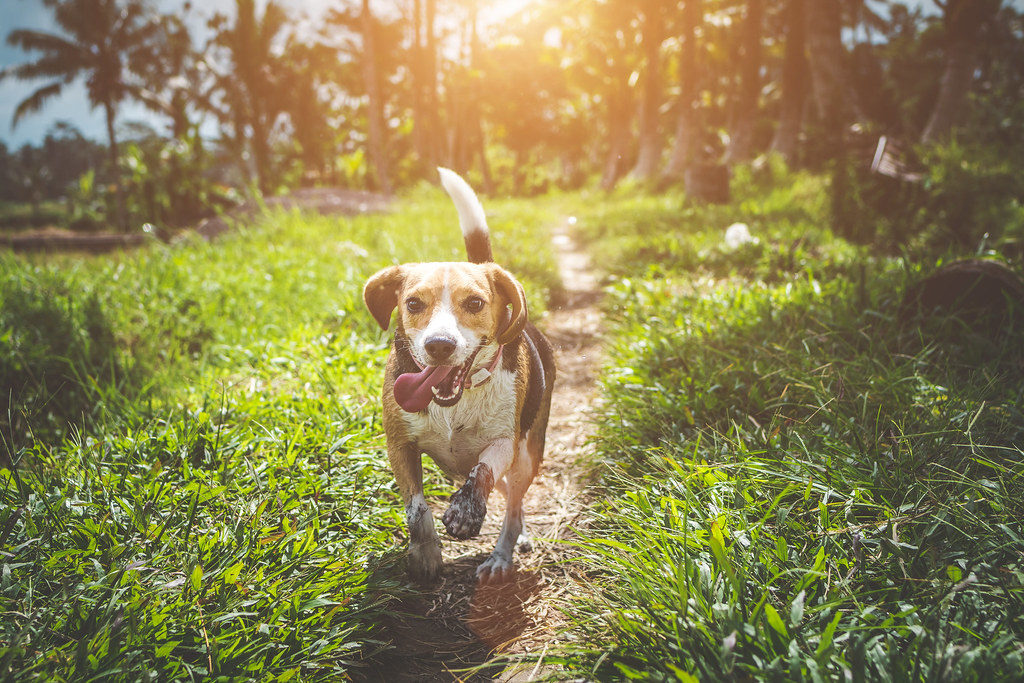Protecting Pets from Predators

As caring pet owners, we do everything possible to keep our pets out of harm’s way. However, with more wooded and natural areas being developed into neighborhoods and businesses, wild animals have fewer places to reside. Birds of prey, such as hawks and eagles, can pose a serious threat to cats and other small animals, and depending on where you live, coyotes and mountain lions may also be a danger. Since we share our habitat with wild animals, learning how to prevent an attack and protect our pets from predators can make all the difference.
Supervising your pets when they’re outside is an effective way to deter predators. “Even in local outlying neighborhoods, hawks, coyotes, and other predators can harm pets,” said Dr. Stacy Eckman, lecturer at the Texas A&M College of Veterinary Medicine & Biomedical Sciences. “Stay away from nesting predators such as owls and hawks if you know where their nests are and keep your pet’s area clean and free of debris or plant material that predators can hide in.”
Depending on the size of your pet and the area in which you live, keeping your pet in the backyard overnight may not be safe. If your pets are accustomed to being outdoors and are able to defend themselves, such as a larger dog breed, backyard housing can be suitable. However, keeping smaller animals in the backyard unsupervised is not recommended.
“The caution with even larger dogs who encounter a predator is that they are still at risk for fatal diseases such as rabies,” said Eckman. “At a minimum, they will need a shelter of some sort.”
A good rule of thumb is to appropriately fence in your backyard or outdoor pet area to keep out unwanted visitors. Depending on the region you live in, this may include fencing with barbed wire or roll-bars on the top to make it harder for coyotes and other large predators to get over.
“Even raccoons have been known to attack small dogs in backyards in shelters,” said Eckman. “Keeping food bowls empty by discarding any leftover food to keep from attracting wild animals may also help.”
If you come face-to-face with a predator while on a walk or even in your own backyard, stay calm and never turn your back to run away. If you have a small dog or cat with you, pick them up and slowly back away. Grab the leash or collar of a larger dog. Carrying a walking stick is a good weapon to help fend off an attack, as are sticks or rocks to throw at a predator if they look like they’re going to attack.
“Loud, frightening noises may scare and deter predators, as will threatening body language,” said Eckman. “If your pet is attacked while walking, seek medical care immediately. Even if there are no obvious wounds on your pet, your veterinarian will perform a thorough exam to find any unnoticed injuries and vaccinate them for rabies.”
The best tip in protecting your pet from a predator is to let them outside only when you are with them, especially at night, and to keep pet food and water either inside or empty. All wildlife should be respected for their role in the environment, and while healthy habitats need predators, you don’t want your beloved pets to be the prey.
Pet Talk is a service of the College of Veterinary Medicine & Biomedical Sciences, Texas A&M University. Stories can be viewed on the Web at vetmed.tamu.edu/news/pet-talk. Suggestions for future topics may be directed to editor@cvm.tamu.edu.


